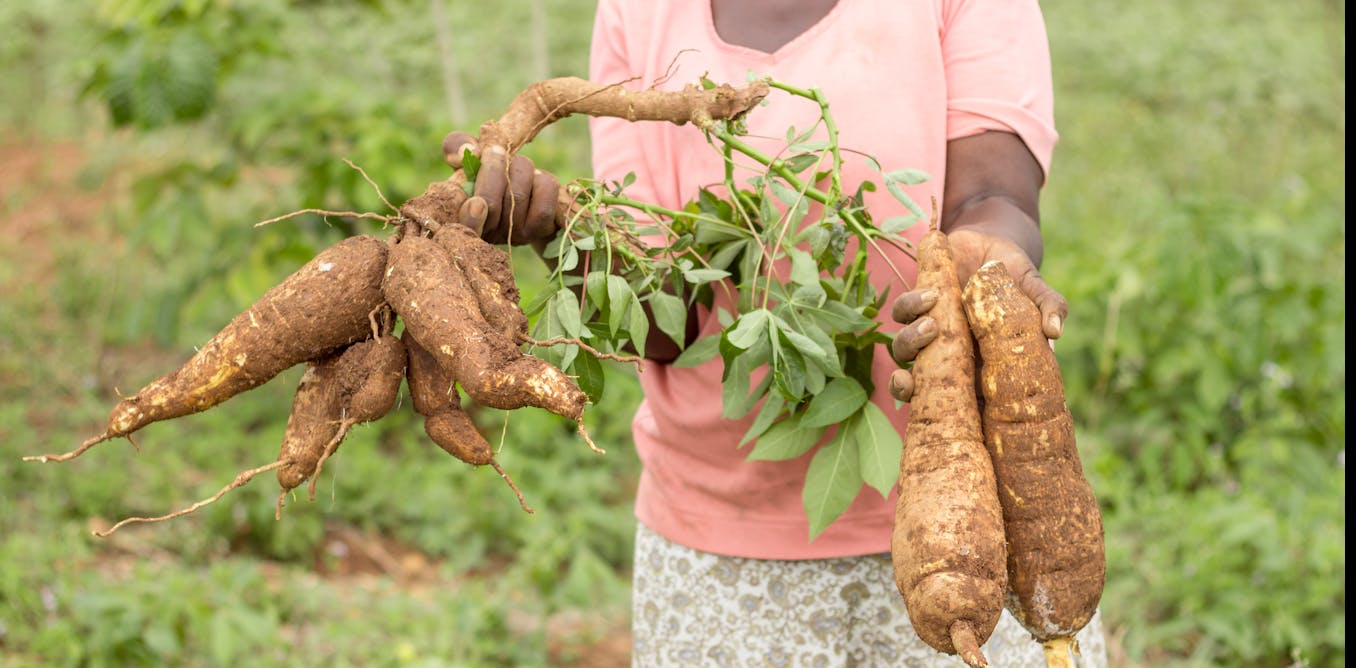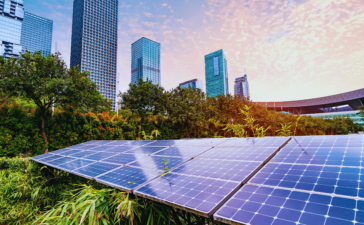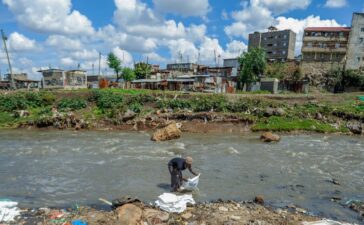The need to feed this population will put pressure on land and water resources.
I’m part of a group of researchers who have looked at whether regional food production would be sufficient to supply growing urban populations. By and large, we have found high levels of food self-sufficiency. But climate change could put a spanner in the works.
We have also looked at the potential of local water conservation measures to help achieve food self-sufficiency in sub-Saharan Africa.
Our study shows that measures such as better irrigation or water harvesting could boost food production while buffering the vagaries of weather.
We found that ambitious – yet realistic – adoption of such measures increases food supply to cities and makes the region as a whole self-sufficient.
A new model
In large parts of eastern Africa, rainfall is relatively abundant and well distributed over the growing season, resulting in good yields. In future, however, the gap between water availability and crop water demand is expected to increase.
We wanted to know whether sub-Saharan Africa would be able to increase its food production to meet future demand, in a changing climate. To do so, we built a novel foodshed model which simulates crop production using climate data and links urban demand to nearby food supply. Foodsheds have been defined as areas where supply matches demand. We assessed various water management measures that could buffer weather variability or increase production (or both). Understanding the potential of such measures can help mobilise and target much needed investments in Africa’s food system.
Conserving water and growing more food
First, we looked at whether regional food production was sufficient to supply growing urban populations.
Combining large databases and crop simulations, we outlined the regions that food might come from for urban areas. Sub-Saharan Africa produces 85% of its overall crop food demand at present, according to our calculations, much of it in eastern Africa. Tanzania, Kenya, and even Uganda – if it were to use its food exports for domestic consumption – come close to being self-sufficient.
Local exceptions are the large cities of Mombasa, the largest port city in Kenya, and Arusha, an important tourism and diplomatic and conference hub in Tanzania, and their immediate surroundings.
In future, a larger population will demand more food. At the same time, the gap between how much water is available and how much crops need is expected to increase. Higher water losses due to higher temperatures will not be fully compensated for by changes in rainfall, according to climate model projections. And even where rainfall is projected to increase, more extreme events are likely to affect crop production. It might rain either too much or too little, which will lead to higher year-to-year variability.
Our study shows that local water conservation measures could buffer some of the projected negative impacts of climate change in eastern Africa. It could also boost food production.
Water harvesting, soil conservation and making sure water infiltrates in the soil would slow runoff and store more water in the soil.
Irrigation systems should be gradually upgraded to drip irrigation or sprinklers. This will improve irrigation efficiency and water consumption. On rainfed areas, rainwater harvesting reservoirs should be installed. The water stored could be used for supplemental irrigation during dry periods. Soil moisture conservation measures will also be applied. These measures will prevent water from evaporating from the bare soil. Irrigation could offset occasional drought risk and so provide better financial stability or create possibilities for planting a different or a second or third crop, further increasing production and income.
Even the foodsheds of rapidly growing cities such as Dar es Salaam in Tanzania will be able to supply enough to meet demand from relatively short distances.
Large scale expansion of irrigation onto new lands should, however, be considered carefully. Potential trade-offs with energy and tourism incomes must equally be considered.
In an earlier study, assessing Tanzania’s ambitious formal irrigation expansion plans, we found that expansion without water conservation measures would pose considerable risk to hydropower production in the new Julius Nyerere Hydropower Project. It would also be a risk to river-dependent ecosystems and national parks and the substantial tourism income that they generate.
Read more:
Kenya needs to grow more food: a focus on how to irrigate its vast dry areas is key
Why our findings matter
Producing more food in Africa is essential to keep pace with population growth and changing diets. The alternative is an increasing dependence on imports from outside the continent. In 2021, the total value of Africa’s food imports was roughly US$100 billion. Imports can be a useful supplement to local production, but major food exporters in Europe and America are already producing at peak productivity. They have limited scope to increase area and production.
Security concerns around global supply chains in the wake of the COVID-19 pandemic, the war in Ukraine, and broader geo-political realignment have also made countries wary of relying too much on others.
Our study confirms the potential of Africa to supply much of the increased demand for food within the continent. We looked at all food crops, including regionally important ones such as cassava, beans and millet. Countries in eastern Africa play a pivotal role.
Improved productivity due to measures proposed would reduce the need for more land elsewhere to grow crops, and limit conflicts related to land use. This is equally important for biodiversity and tourism.
Read more:
Diet and nutrition: how well Tanzanians eat depends largely on where they live
Looking forward
What we propose requires large investments. Exploring these costs against benefits in a case study in the Rufiji basin in Tanzania we found that most water management measures would be cost effective, but only when considering the overall impact of water conservation on agriculture, hydropower production, and the riverine ecosystem.
Not all farmers will be able to finance these measures themselves. The government and private sector have to provide incentives, reduce risks and increase access to affordable loans.
Nor should these measures be taken in isolation. Other buffer mechanisms to support a stable food supply are increased storage facilities for food, diversified production, and stable and diversified trade relationships.
With farmers innovating, the region’s infrastructure rapidly developing, and expanding urban areas becoming catalysts for growth, there is both the need and the scope to further invest in and improve the region’s food system.
This article written by Christian Siderius, Senior researcher in water and food security, London School of Economics and Political Science and is republished from The Conversation under a Creative Commons license. Read the original article.
Discover more from Future of Society
Subscribe to get the latest posts sent to your email.





